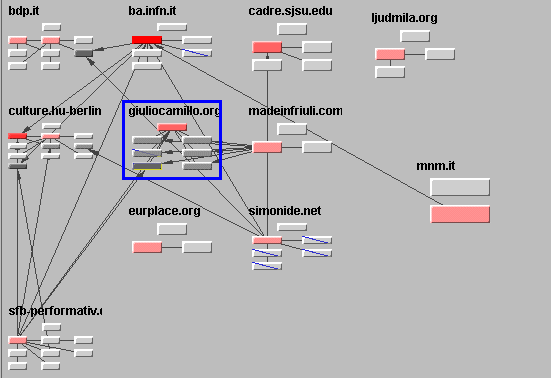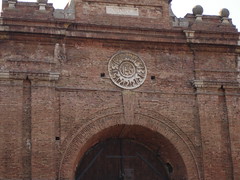...the Art of Memory (is) a spatial mnemonic system...
The assumption of the Art of Memory is that we are predisposed to remember things in the context of place, even where there is no significant connection between the thing remembered and the place where it is located, so that recalling the space is a powerful trigger to the recall of the associated information.
According to Cicero's De Oratore, the poet Simonides invented the Art when called upon to name the unrecognisable victims of a physical disaster the demolition of a building full of dignitaries from which Simonides himself escaped through the intervention of the gods. He was able to name the victims by recalling where they had been seated.
Such spatial mnemonic techniques were used subsequently during the Middle Ages (it has been argued by Yates and others that the Cathedrals were organised as aids to remembering the scriptures) and later, in the Renaissance, by such as Giulio Camillo (1480-1544), Ramon Lull (1235-1316, his works revived in the 15th Century), Giordano Bruno (1548-1592?), Peter Ramus (1515-1572) and Robert Fludd.
. . .
The basic method of the Art is to imagine a space, perhaps schematic but usually architectural, which contains the various things to be remembered. Specific ideas can be contained within other more general ideas, by virtue of being in niches within rooms. Rooms may be badged by the statue of a saint, for example, representing some important principle. Some advocates of the Art devoted much energy to devising structures which in themselves had special meanings, so that the shapes of room and the ways in which they are connected take on semantic importance a three-dimensional semantic net, perhaps, but made memorable by being given form as an imaginable physical building.
Importantly for any consideration of VR is the fact that, rather than simply imagining these architectural structures, most of the leading mnemonists had plans to actually build them! Camillo built a memory theatre described thus:
They say that this man has constructed a certain amphitheatre, a work of wonderful skill, into which whoever is admitted as a spectator will be able to discourse on any subject no less fluently than Cicero.
Viglius Zuichemus, writing to Erasmus, 1532, quoted Yates 1966, p135

 that he promoted incessantly as one of the best images to connect yourself
with God. So ,if you can use these images to know God in some mystical
way, it is perfectly possible that the same art can give you fast knowledge
of more earthly matters. For this reason the magic use of the art didn't
seem, at the time, a stupid idea.
that he promoted incessantly as one of the best images to connect yourself
with God. So ,if you can use these images to know God in some mystical
way, it is perfectly possible that the same art can give you fast knowledge
of more earthly matters. For this reason the magic use of the art didn't
seem, at the time, a stupid idea.
